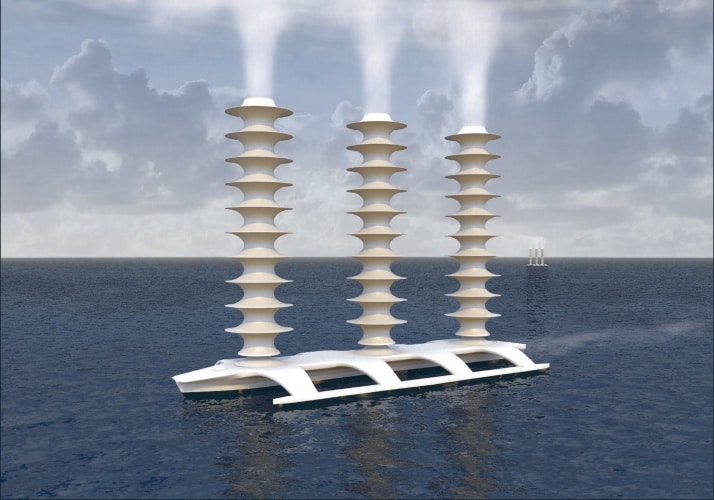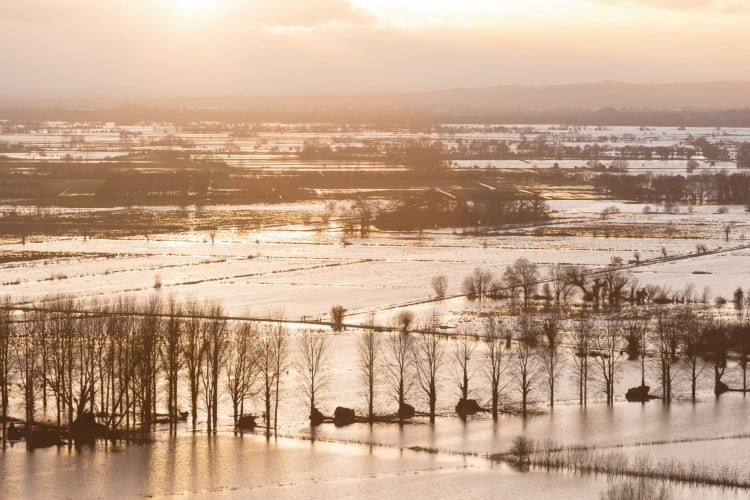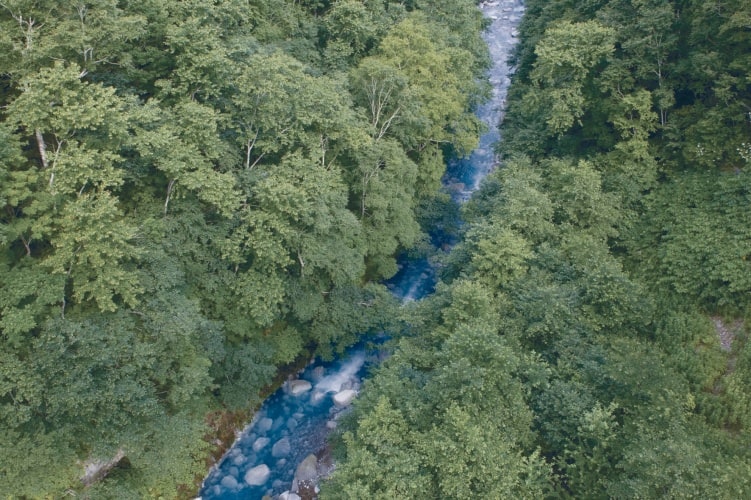The world’s slow progress in cutting carbon-dioxide emissions has led some to call for research into ways we might counteract the effects of man-made climate change. Such attempts to geoengineer our climate range include planting trees to absorb CO2; pumping sulphate aerosols into the atmosphere; and building giant orbiting space mirrors to reflect heat back into space.
We put your questions on these proposals for geoengineering to a panel of experts:
- Stephen Salter, emeritus professor of engineering design at the University of Edinburgh, who has designed a system for pumping seawater into the air to create artificial clouds;
- Richard Darton, professor of engineering science and co-director of the geoengineering programme at the University of Oxford;
- Andrew Charlton-Perez, assistant professor of meteorology at the University of Reading; and Angus Ferraro, University of Exeter, whose research has raised questions about the unintended and potentially dangerous consequences of geoengineering.

What do you see as the pros and cons of the different geoengineering techniques that have been proposed?
Richard Darton: Geoengineering comes in two main flavours: a variety of schemes known as Carbon Dioxide Removal (CDR), in which the most prevalent greenhouse gas is taken out of the atmosphere into safe storage; and Solar Radiation Management (SRM), which reflects sunshine back into space, to avoid it heating the Earth’s surface.
Carbon Dioxide Removal (CDR) would be needed at massive scale in order to have any effect and this would take many decades
Prof Richard Darton, Oxford University
CDR would be needed at massive scale in order to have any effect and this would take many decades. It would be technically easy to turn down or off if needed, but once the industry was up and running there would be a huge investment of capital at risk if it were prevented from operating. CDR would also act to reduce ocean acidification.
SRM, on the other hand, is said to be quick-acting: global temperatures might reduce noticeably within a few months of deployment (such a cooling has been observed following volcanic eruptions that altered the radiation budget in a similar way). However, the commitment to SRM would involve complex logistics, let alone political agreement, and this would take several years to put in place.

Stephen Salter: Every geoengineer agrees that reducing CO2 and CH4 [methane] emissions would be the ideal technique except for the present, well-demonstrated con of the political impossibility of achieving it. Absorbing existing and new CO2 from the atmosphere has a strong pro and would be the next best except for the con that the atmosphere weighs more than 5x1018kg. It will take a big effort to move even a fraction of this through any chemical plant. We should be able to encourage biological absorption with biochar and also accelerate geological reactions with materials such as olivine but this looks slow and rather expensive. Absorbing CO2 from point source releases such as power stations [with carbon capture and storage] does not look impossibly expensive and would at least slow the rate at which the problem is increasing.
There are three quite different ways to reduce the solar input: mirrors in space; sulphur in the stratosphere; and marine cloud brightening [increasing cloud density by spraying seawater into the atmosphere]. The cons of the space method are a very high cost, energy and noise, the reluctance to turn an expensive investment off and the attraction of the related technology for military weapons. A pro for stratospheric sulphur is that it would be very much cheaper than mirrors in space. A minor con for stratospheric sulphur is acid rain but the amounts required are well below present acidic emissions from coal burning.
What are the technological challenges that need to be overcome to put these ideas into action?
SS: The challenges for injecting stratospheric sulphur are the modification of flight-refuelling aircraft for carrying acidic material, the design of hoses that can be lifted by balloons but not damaged by wind, or perhaps other methods such as shells fired from ground and the common problem of control of aerosol size. The challenges for marine cloud brightening are the design of an energy-efficient method for spray production and the generation of sufficient energy in mid-ocean.
RD: SRM schemes involving mirrors in space seem far-fetched at present — they obviously require solution of some severe design and operational challenges. The challenge for CDR schemes is to reduce their cost and improve their effectiveness, so that the large scale of deployment becomes less burdensome. It is hard to imagine a scenario in which CDR is applied without at the same time instituting a far more severe control of CO2 emissions, so we ought also to see carbon capture and storage, energy efficiency and renewables as part of the CDR deployment mix.
Have any recent technical advances made these techniques more feasible?
RD: Not really. Considering the potential importance of geoengineering, relatively little research is being done at present. Most publicly funded research concentrates on climate modelling and issues of governance and public acceptability. These issues are extremely important, of course, but it means that policy development is taking place in a fantasy world: the engineering challenges that address the key issues of practicality and deployability are mostly receiving little attention.
SS: The hardware design for marine cloud brightening has gone through a series of stages with steadily decreasing imperfections. The present design uses the new technique of digital hydraulics, originally intended for applications in renewable energy, and on micro lithography as used in the semi-conductor industry.

How long would the effects of these techniques last and would it be possible to permanently geo-engineer the planet to counteract man-made climate change?
Andrew Charlton-Perez: Observations of major volcanic eruptions suggest that stratospheric aerosols have a lifetime of one to two years. This implies a long-term commitment to maintain the enhanced stratospheric aerosol amounts. Should this commitment be terminated abruptly, this could lead to very rapid climate change that would likely be extremely difficult for society to adapt to. Geoengineering by brightening marine clouds is potentially easier to control than adding aerosol to the stratosphere, which has a significant lag between action and climate effect.
I would strongly oppose the deliberate use of any ‘permanent’ technique: the next Ice Age is overdue.
Prof Stephen Salter
SS: The nuclei from marine cloud brightening are washed out by rain and drizzle so the lifetime varies. The best estimate is ‘a few days’. By computer superposition of satellite images of clouds downwind it is possible to measure the cooling and its duration from a single spray vessel. The CO2-removal methods might take 100 years to take a useful effect but this would last until a decision to resume emissions. I would strongly oppose the deliberate use of any ‘permanent’ technique: the next Ice Age is overdue.

Would these techniques affect the entire planet or have more of a regional impact? Would individual countries be able to adjust their climate to their own requirements?
ACP: Obviously, changing the properties of clouds tends to have large local impact. For stratospheric aerosol geoengineering, responses are less localised, but are also non-uniform across the globe: there would generally be cooling in the tropics and some warming in the polar regions compared to pre-industrial temperatures. In comparison, climate change is expected to lead to warming at all latitudes with much larger warming in the Arctic. Given that climate variability operates on large spatial scales bigger than most countries and our ability to predict and understand this variability is limited, it is extremely unlikely that individual countries would be able to adjust their climates independently.
It is extremely unlikely that individual countries would be able to adjust their climates independently
Andrew Charlton Perez
RD: All geoengineering schemes would affect every person on the planet, one way or another, so it is absolutely vital that an international framework be developed through which nations and regions can reach consensus and agreement. It might indeed be possible, technically, for a large country to adjust its own climate using SRM, but this would certainly affect its neighbours (and perhaps the whole planet). CDR would tend to limit the global mean temperature rise for everyone, but some CDR schemes, for example, those involving planting huge areas with new crops, could have a local effect on the climate.
How easy would it be to tailor our intervention and how would we decide how far to push the cooling effect?
RD: At present we know of no way to ‘tailor our intervention’ so as to avoid such unintended impacts — Earth systems are simply too interconnected.
SS: Marine cloud brightening should allow a considerable degree of tailoring if we can learn where and when it should be done. Reducing sea-surface temperatures above 26.5˚C along the hurricane breeding paths would reduce the probability and severity of hurricanes and typhoons. Models show the puzzling result that spray off Namibia will reduce precipitation over the Amazon basin but also the even more puzzling result that this can be opposed by spray near the Aleutian Islands [in the northern Pacific].
ACP: A sophisticated climate monitoring system, most likely more complex than the one that exists at present, would be needed to monitor the impacts on climate of any intervention that was made. Deciding how much cooling would be required goes beyond what climate scientists could comment on, involving political and moral consideration. For some of the techniques there are also technical limitations to the amount of cooling that could be achieved. For example, if aerosol precursors were injected very rapidly into the stratosphere at some point the resulting aerosol particles would become very large and fall out into the troposphere, thereby providing an upper limit to how much the aerosol amount could be increased.
How confident can we be that geoengineering techniques wouldn’t have negative side effects? What might these side effects be?
ACP: Studies with climate models suggest that, in addition to changing surface temperature, many other aspects of the Earth system would also be affected by an artificially enhanced stratospheric aerosol layer. These include changes to the hydrological cycle, sea ice, stratospheric ozone and the productivity of the biosphere. The most significant negative side effect is probably the reduction in precipitation in the tropics, with particularly significant reductions in tropical regions with a monsoon climate such as east Asia and southern Africa. Confidence in what these likely side effects might be has been increased by more comprehensive climate model studies in recent years, but quantifying the size of potential side effects remains very challenging given the imperfect nature of climate models and limits to our understanding of the climate system and hydrological cycle. As with other aspects of the climate system, the possibility of experiencing side effects that haven’t previously been anticipated or quantified is also quite high.
We should remember that continuing to burn ever-larger amounts of fossil fuel is already causing ‘side effects
Richard Darton
SS: We cannot be as confident as I would like but there is a chance that there could also be positive side effects. Marine cloud brightening makes for less rainfall over the sea to leave more to fall on land. It is therefore wrong to use figures for worldwide precipitation changes if the main reductions are over the sea. An interesting study by Indian climate experts shows that marine cloud brightening would produce a very small reduction of precipitation over the Indian subcontinent, which is more than offset by a reduction of evaporation on land and so give higher river run-off.
RD: We should remember that continuing to burn ever-larger amounts of fossil fuel is already causing ‘side effects’. The results are visible in many ways: changing weather patterns, the spread of diseases, growing stress on water resources and so on.
There are various specific side effects of geoengineering. For example, CDR involving the growth of biomass for energy with carbon capture and storage would mean very large-scale land-use change and competition for land between energy crops, food crops and wild countryside. Side effects could be food scarcity, ecosystem impoverishment and habitat destruction, displacement of populations and social disruption. CDR by chemical processes will have great opportunity costs as productive industrial and financial capacity is diverted to building and operating chemical plant in a new, huge industry — purifying the atmosphere.

What is the current progress of technology development for geoengineering and when do you think we might see the first experiments?
SS: Progress on purpose-designed hardware is very slow and is dwarfed by a vast multinational effort on ethics and politics of governance. While there are many computer studies that could be called experiments, I know of only four intentional, real-world, open-air ones. Progress on hardware technology would be greatly accelerated with a small fraction of the money being spent now on international climate conferences but I do not see this happening until we have suffered a great deal more from climate change. With efficient project management the first experiments for marine cloud brightening could take place from land-based plant on the Faroe and Aleutian islands 18 months after funding was available.
RD: Most geoengineering schemes are at a low level of technology readiness. What has been lacking is serious engineering evaluation of whole deployment scenarios, to check the whole-life costs and impacts, including side effects. However in North America there are several groups working towards commercialisation of CDR using chemical and physical sorbents. An important question is that of funding since, at present, with a low carbon price, it is hard to understand how commercialisation will be rewarded. Technically, we could expect to see geoengineering tests of CDR and SRM at a moderate scale within the next five years, but whether public and international political acceptance and the commercial underpinning will be agreed in that time is doubtful.




Red Bull makes hydrogen fuel cell play with AVL
Formula 1 is an anachronistic anomaly where its only cutting edge is in engine development. The rules prohibit any real innovation and there would be...